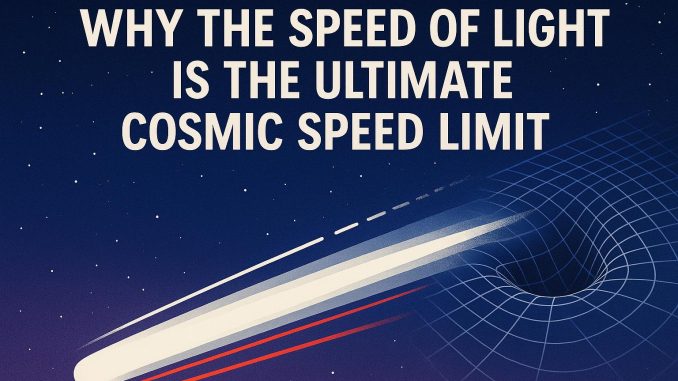
The Speed of Light: A Fundamental Constant
The speed of light in a vacuum, quantified as approximately 299,792,458 meters per second, transcends the role of being merely a large number; it is a fundamental constant of nature. This constant, denoted by c, plays a pivotal role in the sphere of physics, forming the bedrock upon which much of modern physics is built. It is a crucial element in Einstein’s theory of relativity, which has continually shaped our understanding of time, space, and energy.
Einstein’s Theory of Relativity
Albert Einstein, in 1905, put forward the Special Theory of Relativity, bringing novel insights into the field of physics. This groundbreaking theory postulates that the laws of physics are invariant among all non-accelerating observers. Within this theoretical framework, Einstein asserted that the speed of light in a vacuum represents the ultimate speed threshold in the universe. This speed remains constant regardless of the motion of the observer relative to the light source. By introducing these radical ideas, Einstein altered the conventional understanding of time and space. The theory suggests the possibility of time dilation and length contraction, phenomena that manifest depending on the observer’s frame of reference.
The Implications of an Immutable Speed
The equations introduced by Einstein convey profound implications: as an object’s speed approaches that of light, time, from the perspective of an outside observer, appears to decelerate, while the object’s mass effectively approaches infinity. This phenomenon implies that accelerating any mass-bearing object to light speed would necessitate infinite energy, a practical impossibility. Consequently, the speed denoted by c is not simply a suggestion but an intrinsic upper bound — a cosmic speed limit governing the propagation of energy, information, and matter throughout the universe.
Photon Behavior and Relativity
Photons, the elementary particles constituting light, intriguingly possess no rest mass, enabling them to traverse at the speed of light. This phenomenon aligns with the principles enshrined in the theory of relativity, suggesting that photons experience no passage of time and can theoretically cover any spatial distance instantaneously from their perspective. Yet, for an external observer, photons are perceived to travel at the constant speed, c. This scenario vividly illustrates the essence of relativity — the observation of physical phenomena as relative to the frame of reference.
Technological and Philosophical Implications
Recognizing the speed of light as the supreme velocity limit provokes far-reaching implications, coloring both technological ambitions and philosophical inquiries. On a technological front, the dream of interstellar travel becomes intertwined with understanding this cosmic speed cap. Although modern human technology lingers far from achieving velocities anywhere near c, expanding knowledge in this area can direct scientific exploration and innovation, offering guidance to fields such as astrophysics and cosmology.
Considering the philosophical dimensions, the entrenched status of light speed as a fundamental limit prompts contemplation about causality and the fundamental nature of reality. The concept that nothing can surpass the speed of light in a vacuum raises questions about the linearity and interconnectedness of cause and effect. Furthermore, it challenges humanity’s understanding of the universe’s structure and the temporal-spatial relationships that form its foundation.
Beyond being a mere quantitative measure, the speed of light symbolizes a critical aspect of scientific paradigms. As our grasp of the universe continues to expand, this constant remains a cornerstone of contemporary physics, highlighting the intricate relationships amongst energy, mass, and the very fabric of spacetime. This understanding molds our perception of the cosmos, guiding us as we venture deeper into the mysteries of the universe.
